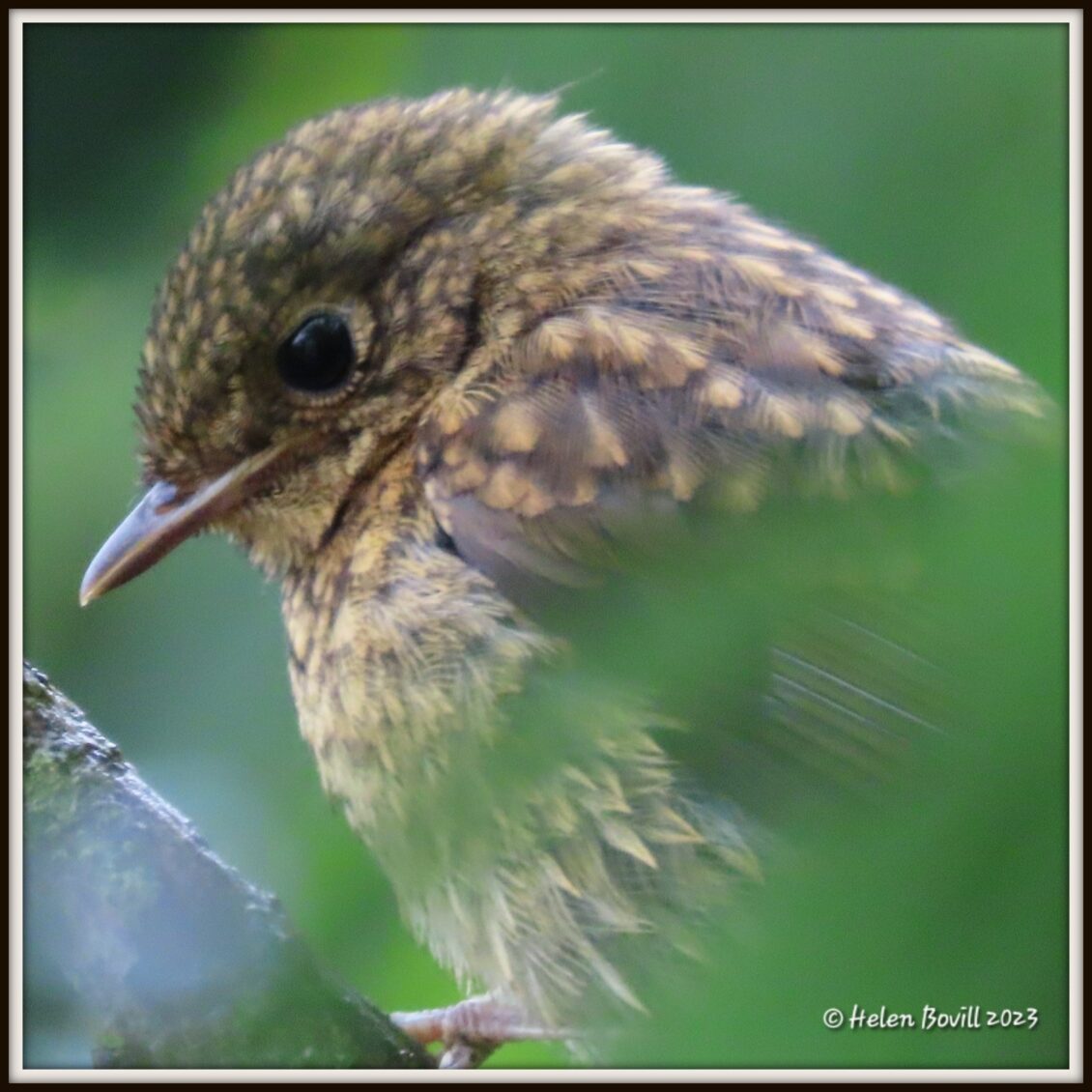While parts of mainland Europe sweltered under record breaking heat, it has been a rather cool month here, with a higher than usual rainfall too. This caused some of the footpaths to become muddy again. There have been some warm sunny days though, and the cemetery wildlife is still thriving. This is particularly noticeable with the birds, as I’ve seen lots of fledglings around.
Birds
I started this report with a young Robin. It is probably less than a month old as it was flying, but doesn’t yet have its red breast. This will develop in late summer when the bird is between two and three months old. Once the young bird has its red breast it will be chased out of the area by the very territorial males. The initial lack of a red breast prevents this from happening and gives it time to learn to fly and feed itself.
I’ve seen lots of young Great and Blue Tits around the cemetery too.
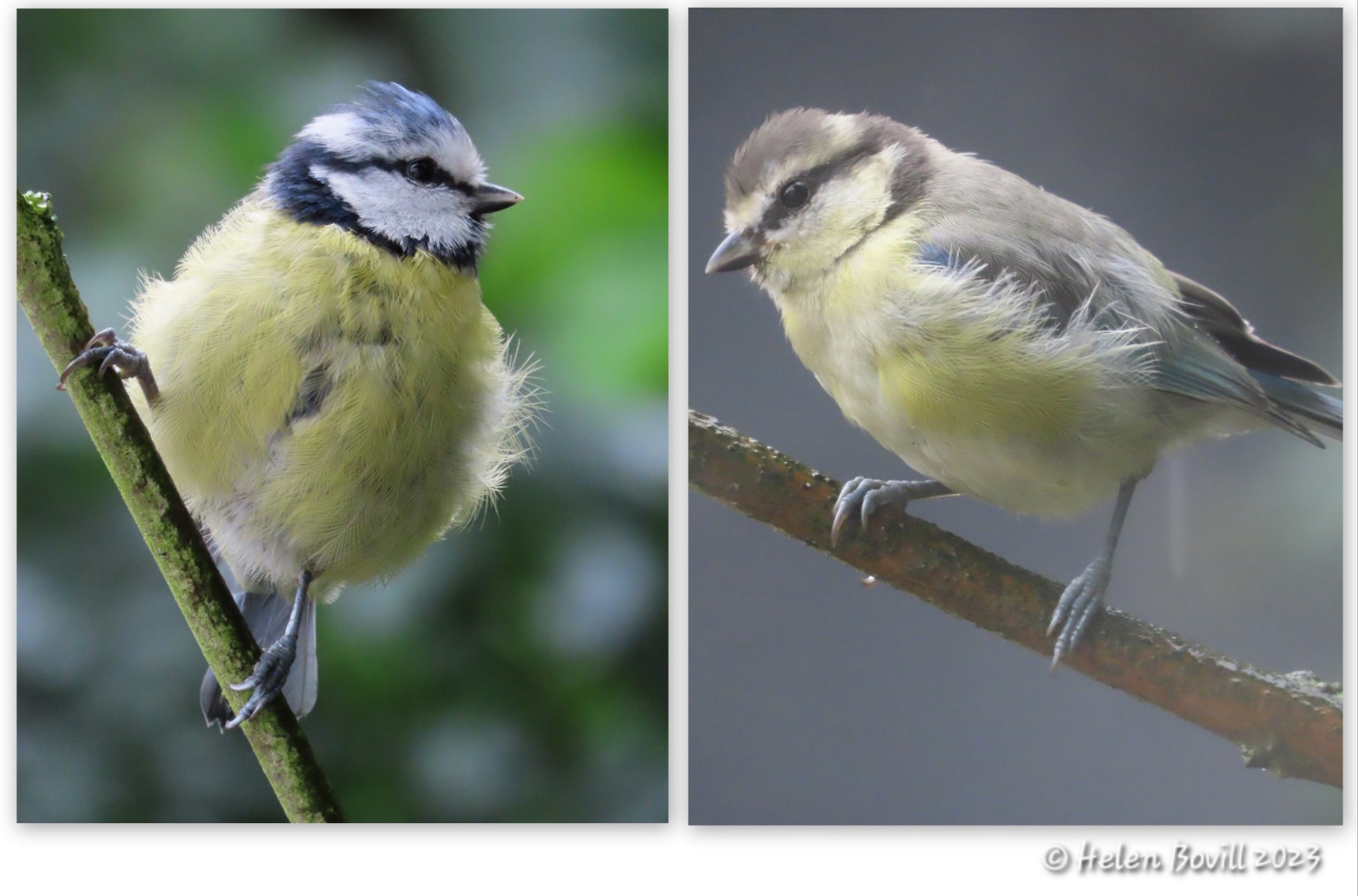
I was delighted to see a Coal Tit this month. It was high up in a tree so I couldn’t get a particularly good photo of it, but I could clearly see the distinctive white patch towards the back of its head. That and the beige coloured chest meant it couldn’t be any other bird.
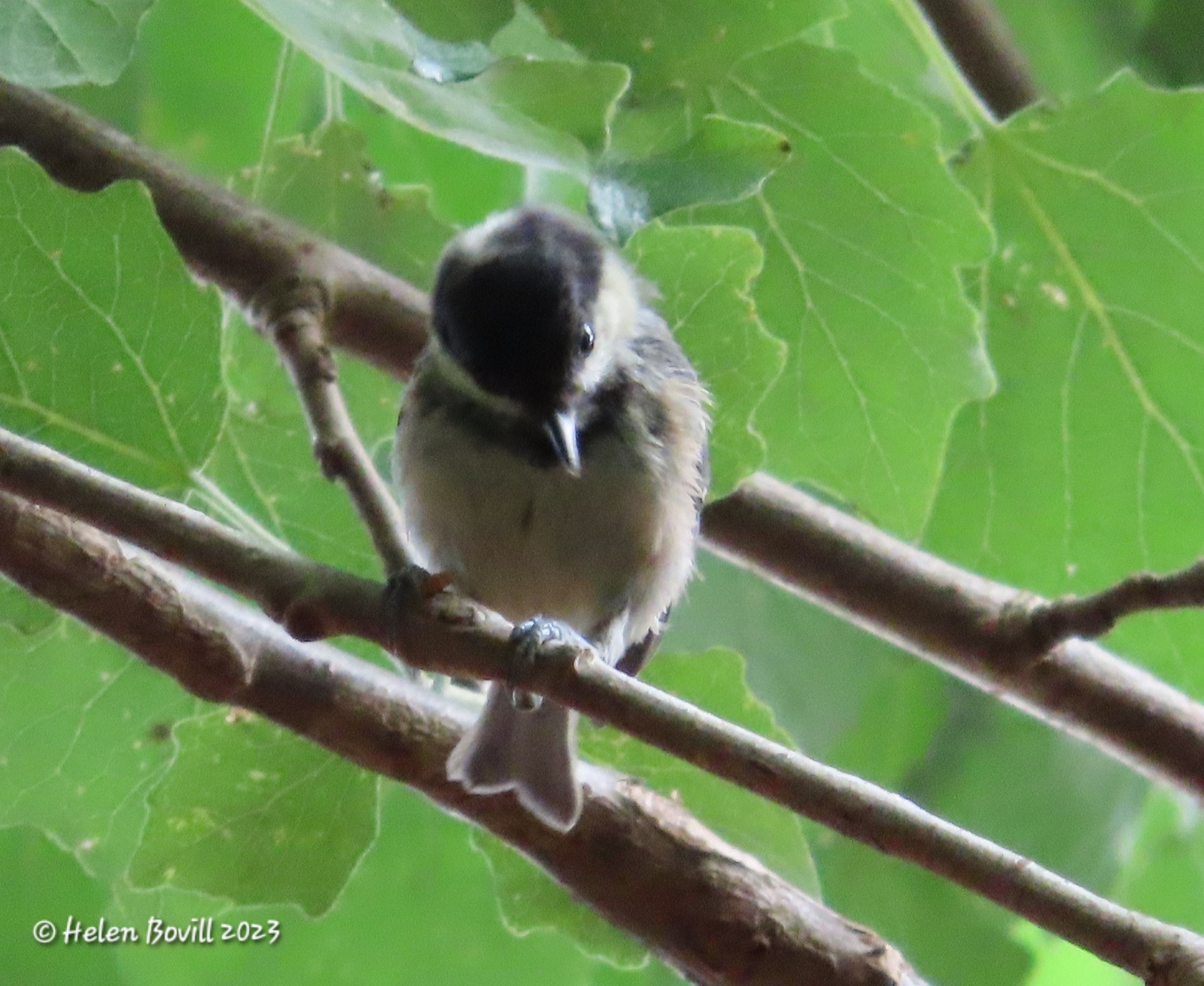
I regularly heard and saw Goldfinches this month. There were lots of Chaffinches around, including young ones, and I still got occasional glimpses of the two Bullfinches I mentioned last month. I’m sure it’s the same pair as they’re not a common or numerous species here.
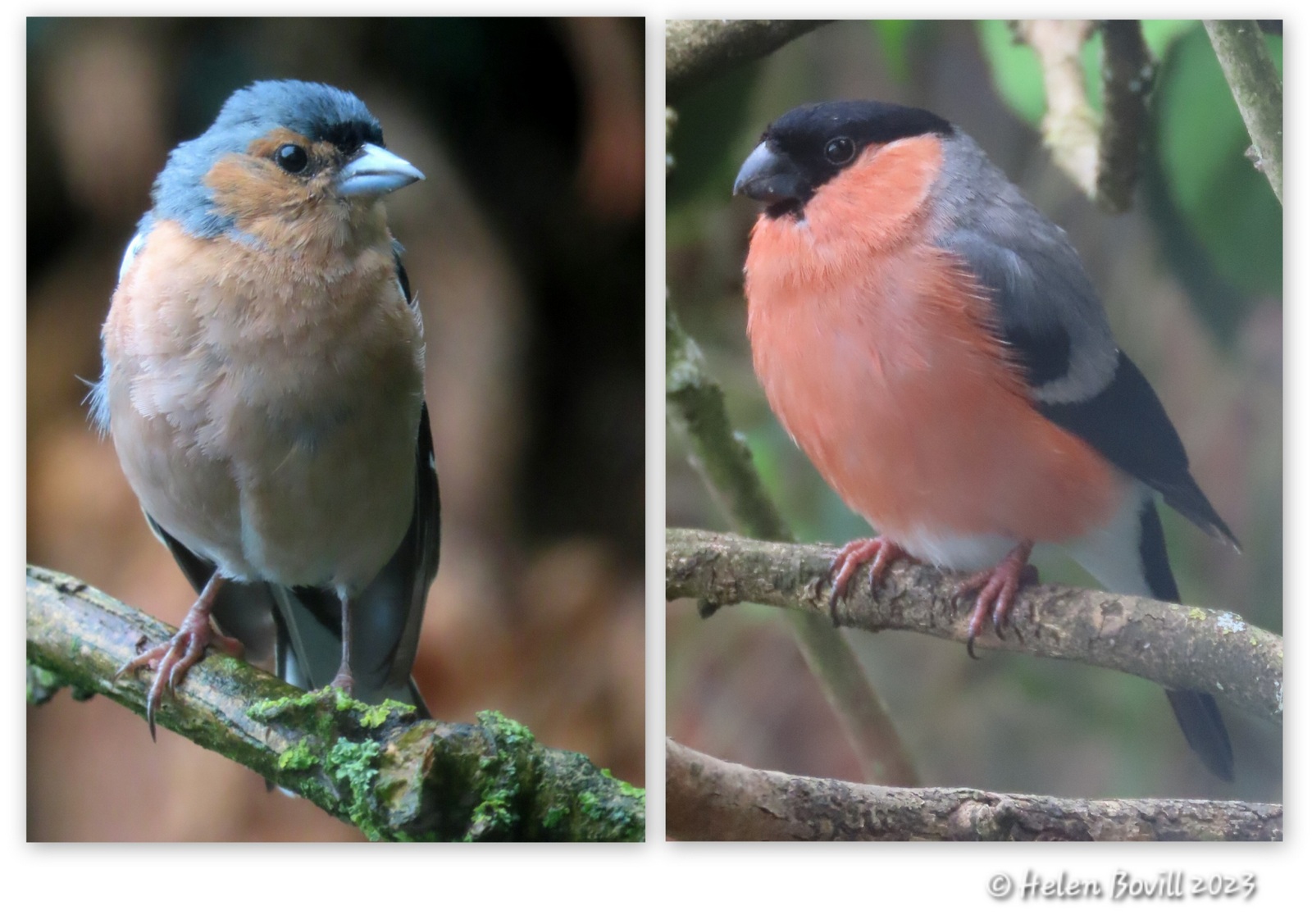
I also saw young Blackbirds foraging on the ground, but begging for food whenever a parent was nearby. I also saw several Carrion Crows, Magpies, Wood Pigeons, Wrens and this Song Thrush.
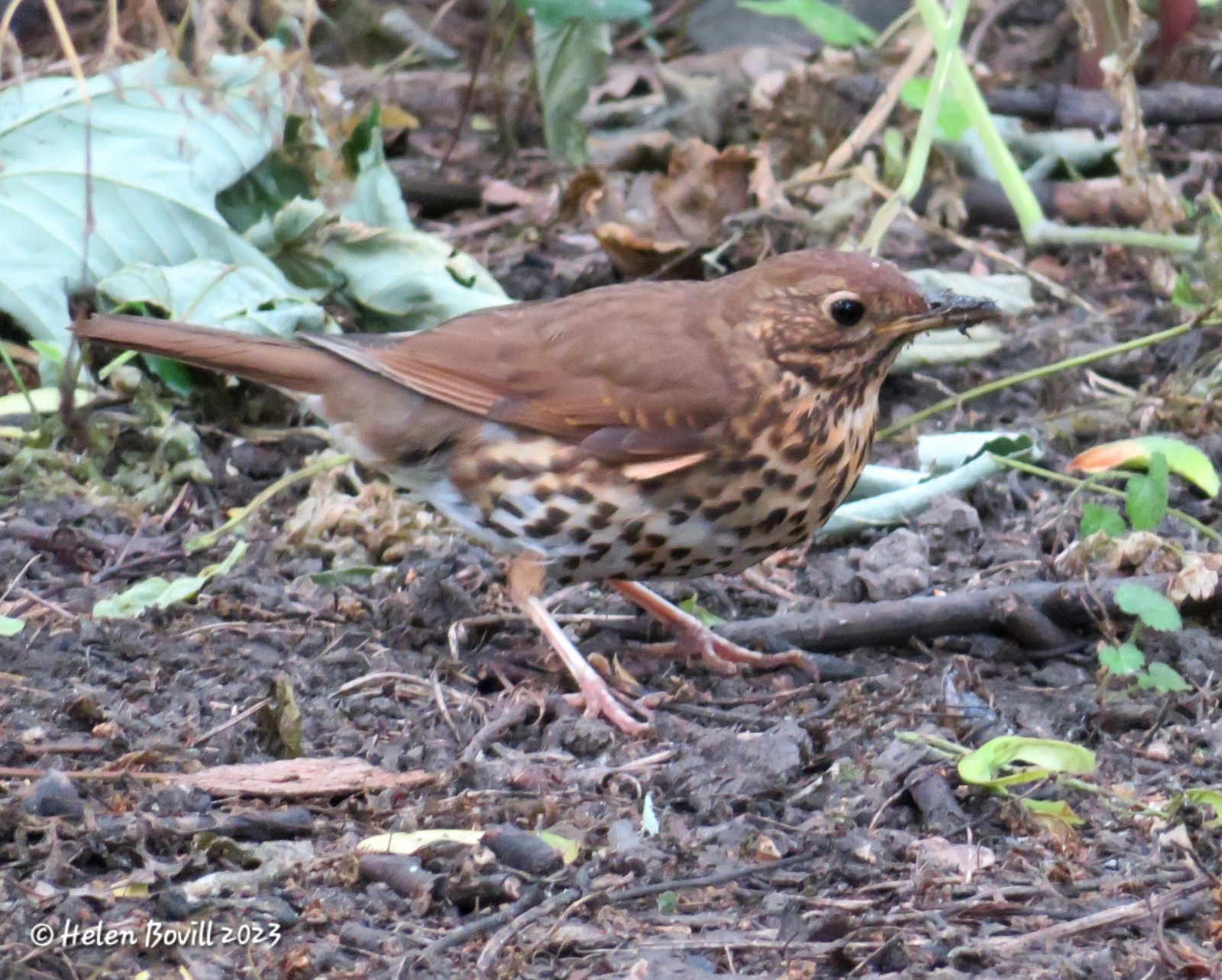
Insects
There were lots of Ladybirds around this month, and lots of Hoverflies too. When I use my phone to take close-up photos of flowers with Hoverflies on them, it’s always amusing to see another one trying to land on the flower on my phone screen!
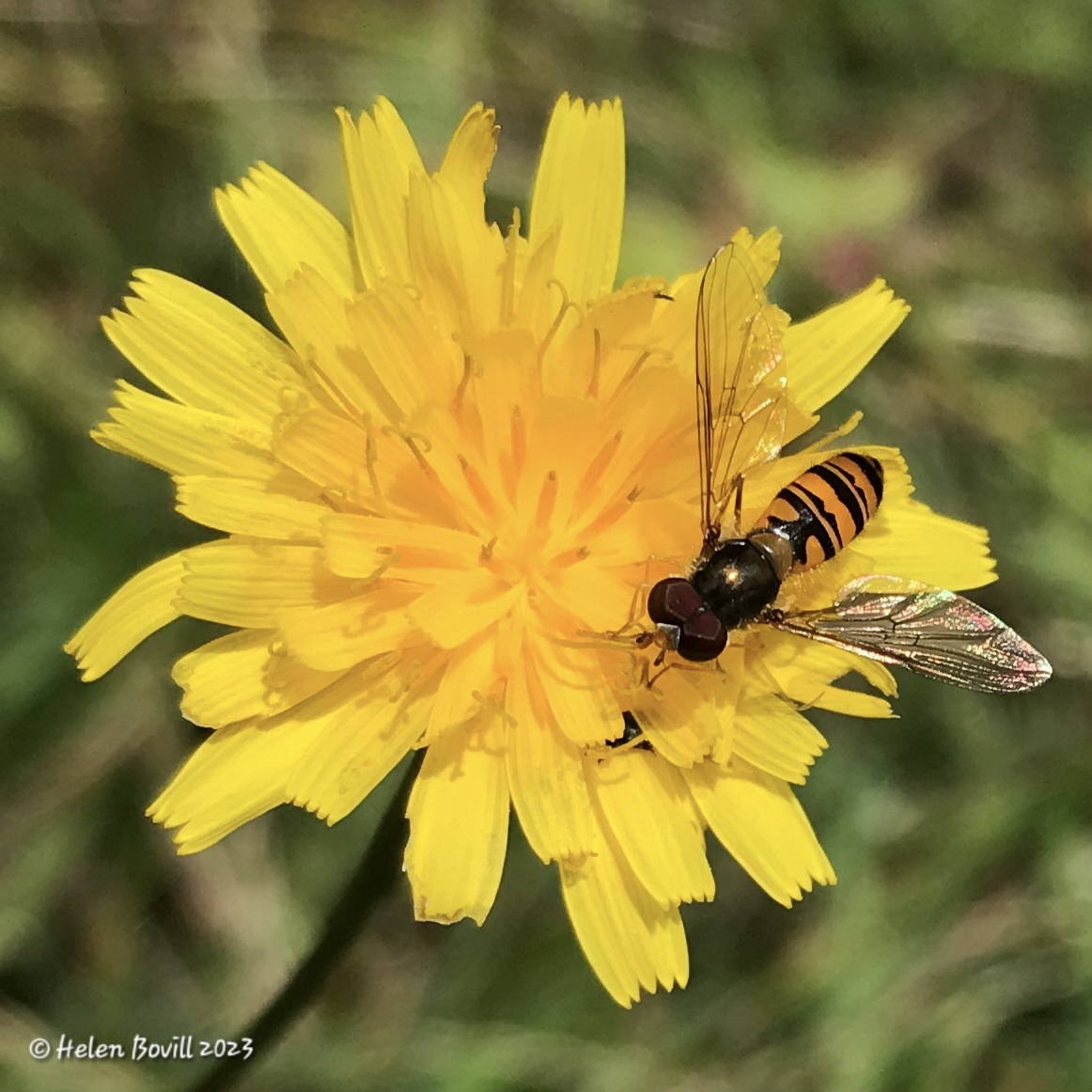
I kept seeing Thick-legged Flower Beetles too, a species I hadn’t seen in previous years in the cemetery.
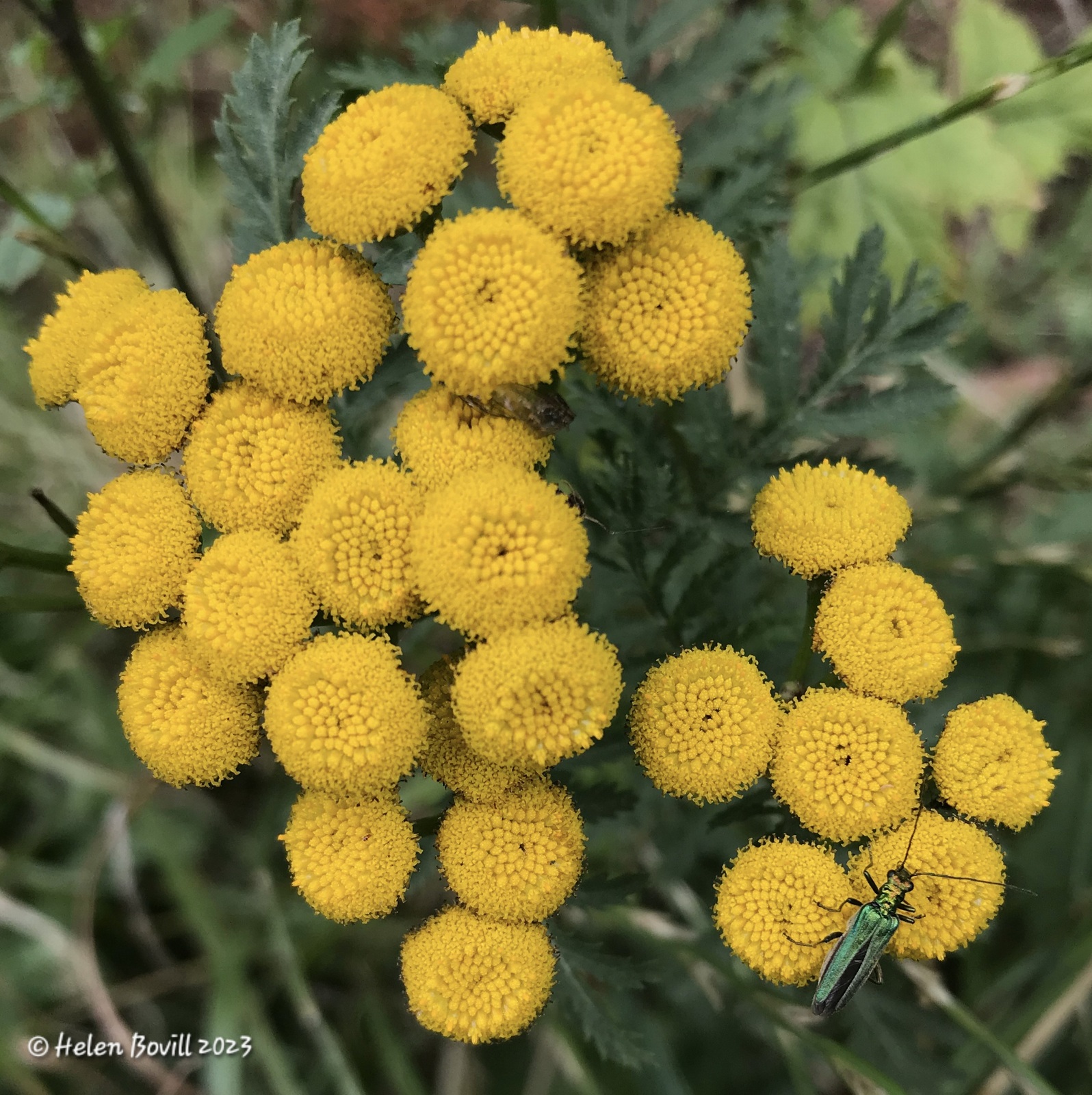
I see lots of flies too, but tend not to mention them as they’re so commonplace and often quite small and difficult to photograph. But this Flesh Fly stood out, being larger than most.
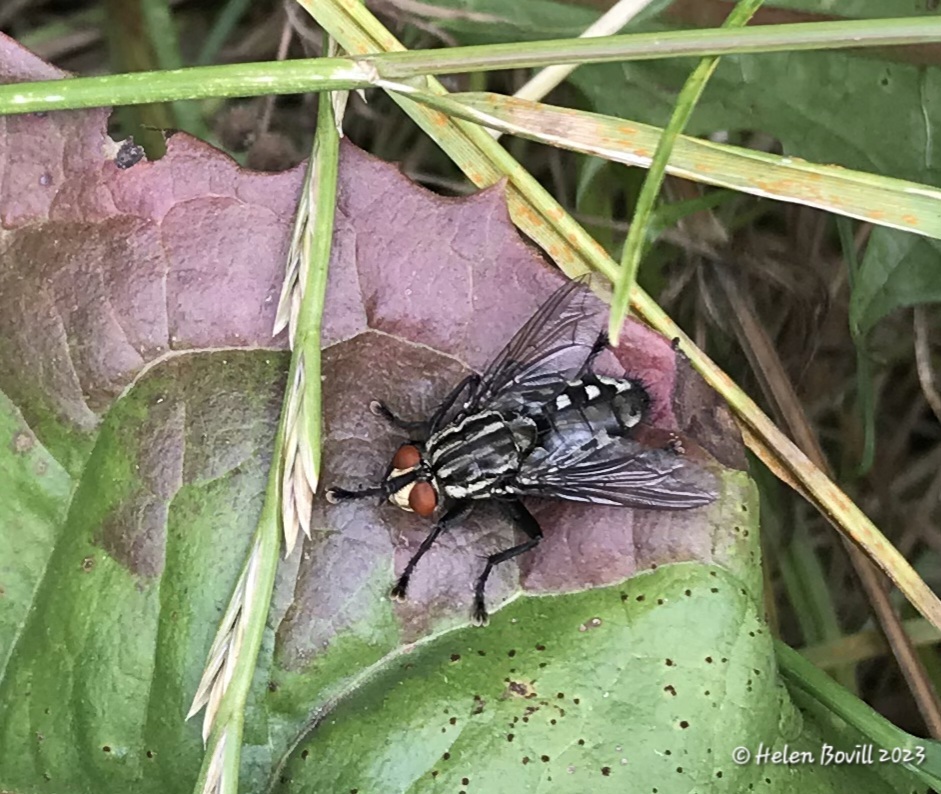
Butterflies
Last month I told you the story of a Large White Butterfly from egg to larva/caterpillar. But I also noticed something unusual about a week after I saw the caterpillar on the plant stem. I saw another Large White caterpillar in that same area (or maybe it was the same one?) on a cluster of what looked like oval shaped eggs. I knew these weren’t the butterfly’s eggs, so I did a bit of research and discovered a rather gruesome story.
It seems the “eggs” you can see in the photos below are actually the pupae of a Braconid, a type of tiny parasitic wasp. It lays its eggs inside other insects, including caterpillars. The eggs hatch and the larvae eat the host insect without its knowledge, whilst leaving the vital organs intact so the host doesn’t die. They then hatch out through a hole in the skin of the still-living caterpillar, and pupate near to it.
The caterpillar is then somehow persuaded to spin a web of silk around all the Braconid pupae to protect them. (This is the material it would normally use to make a cocoon inside which it would turn into a butterfly). And still, barely alive, the caterpillar keeps watch over them. I assume this is what we can see in the photo on the left, although the caterpillar still looks quite rounded rather than an eaten-out husk. A week later there was no caterpillar but the web with the pupae in them was still there.
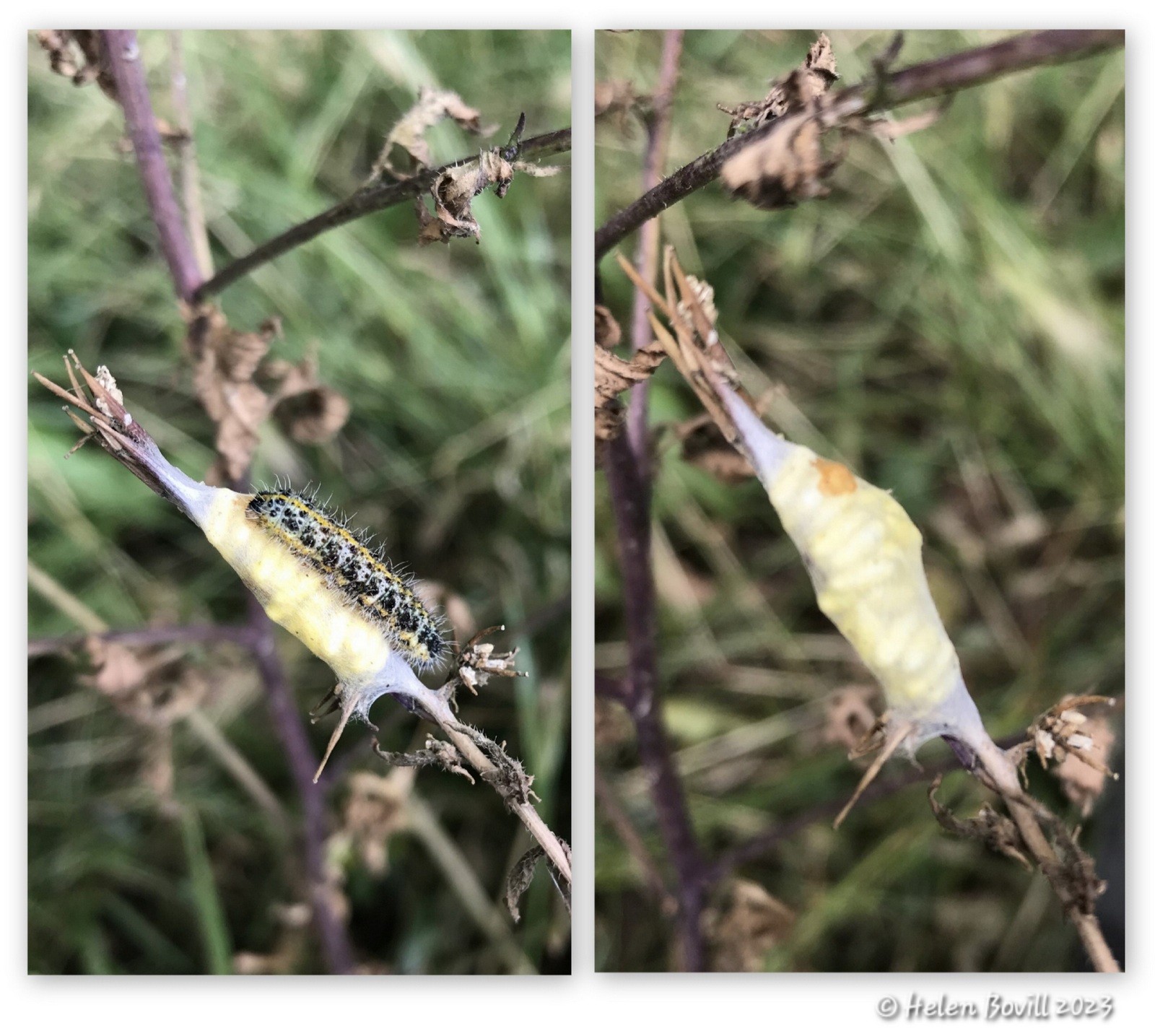
I wasn’t able to observe what happened next due to the rather heavy rain from the middle to the end of the month and I lost track of the plant in the photos. Of course, these photos might not illustrate any or even part of the process I’ve described, but it did seem to make sense.
I didn’t see any more caterpillars, nor did I see a lot of butterflies until towards the end of the month, when there were a number of white ones around – Small White, Large White and Green-Veined White.
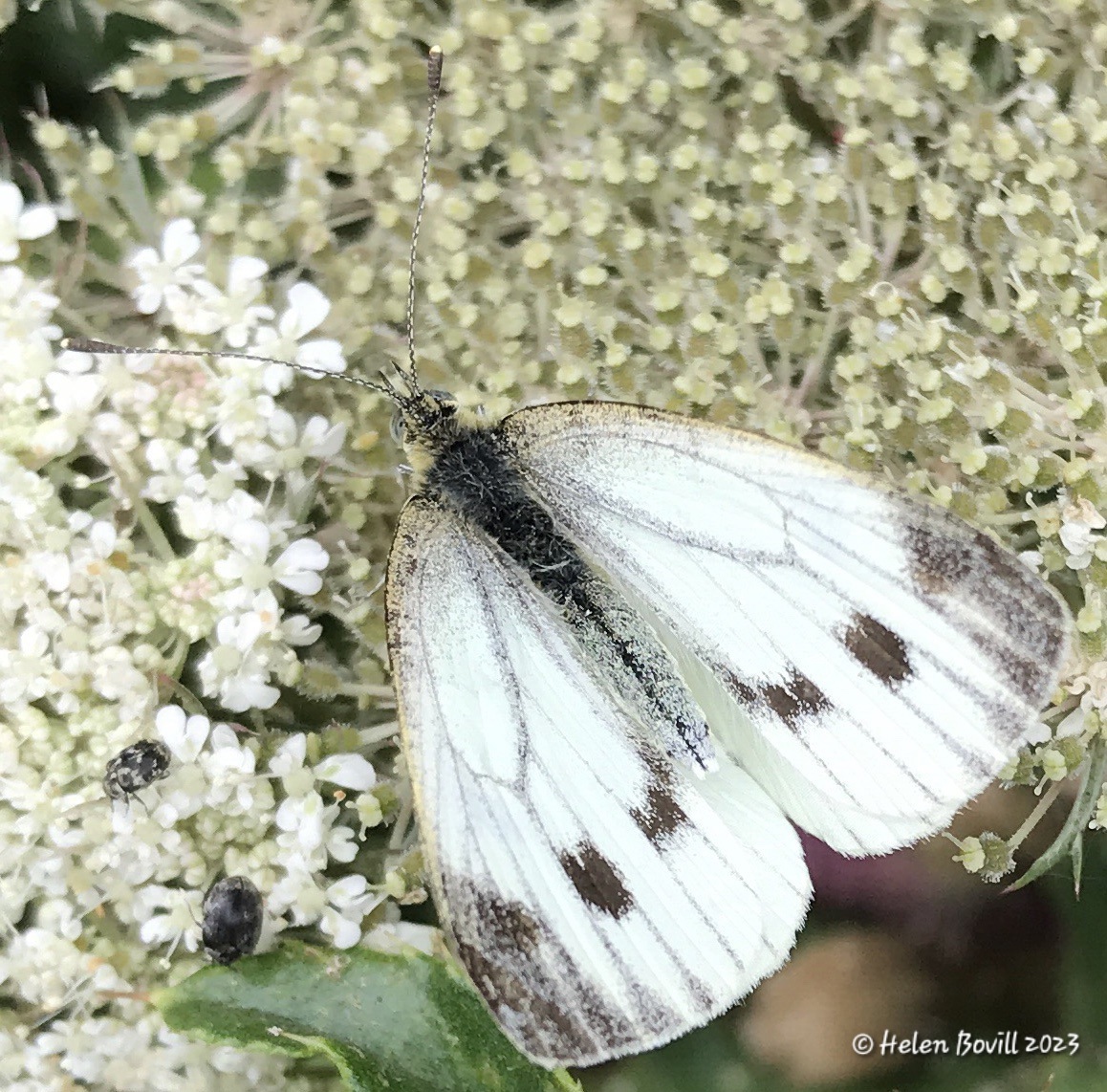
I also saw a few Holly Blues, several Speckled Wood, a Comma and a Red Admiral.
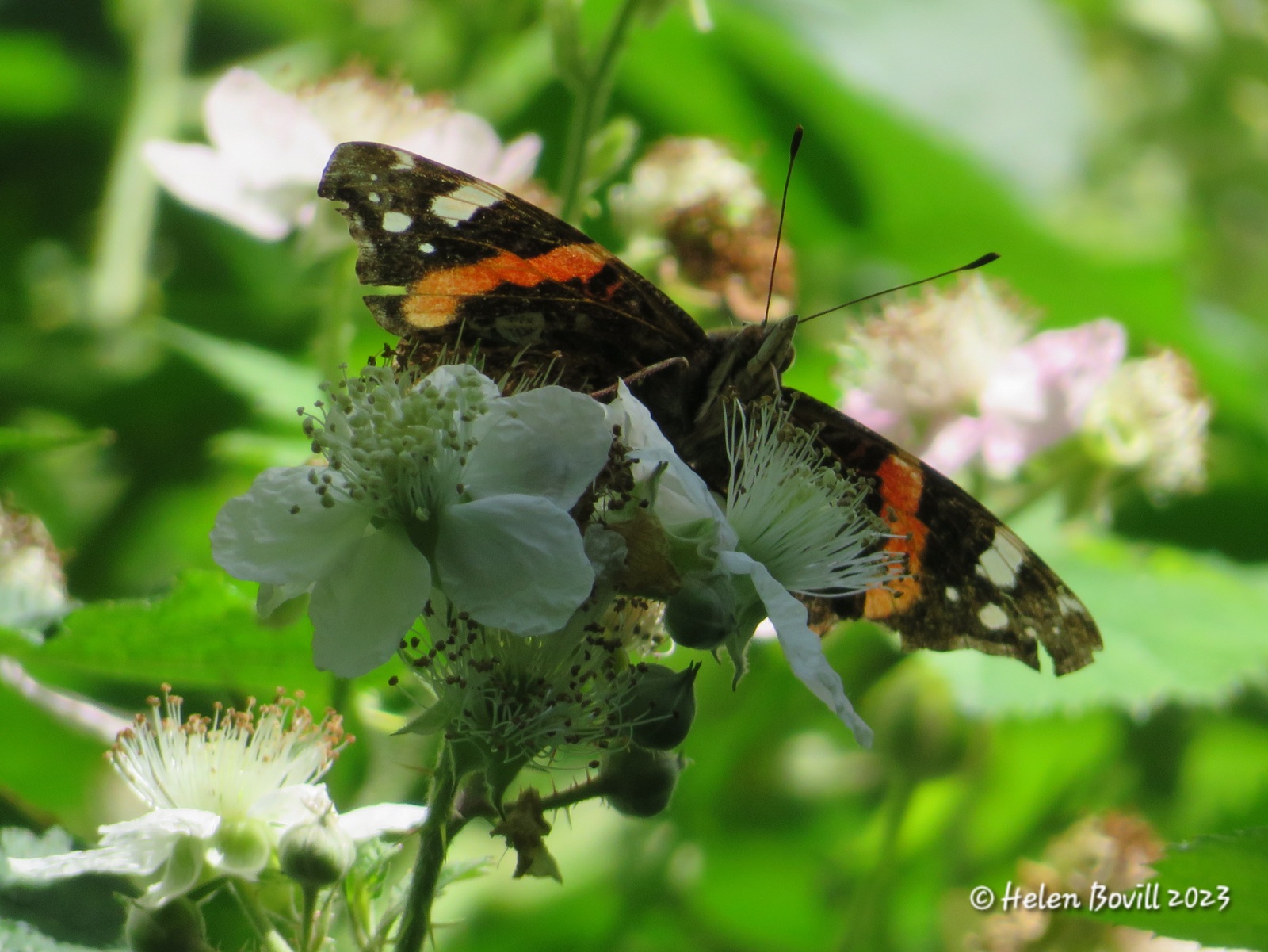
Plants and Flowers
The Brambles in the cemetery and along the grass verge are currently at all stages of development. Some have buds on them, some are in flower, as seen in the photo above, and some have fully ripe fruits on them. All good news for the cemetery wildlife!
Some more of the wildflower plants set by the volunteers last year are now flowering. This includes the Tansy on a previous photo, and the yellow flower the Hoverfly is resting on. These yellow flowers that look similar to Dandelions can be quite difficult to identify and they include Hawkbit, Hawk’s-Beard, Goatsbeard and Cat’s Ear.
Mallow is still in flower along the grass verge – Common and Musk.
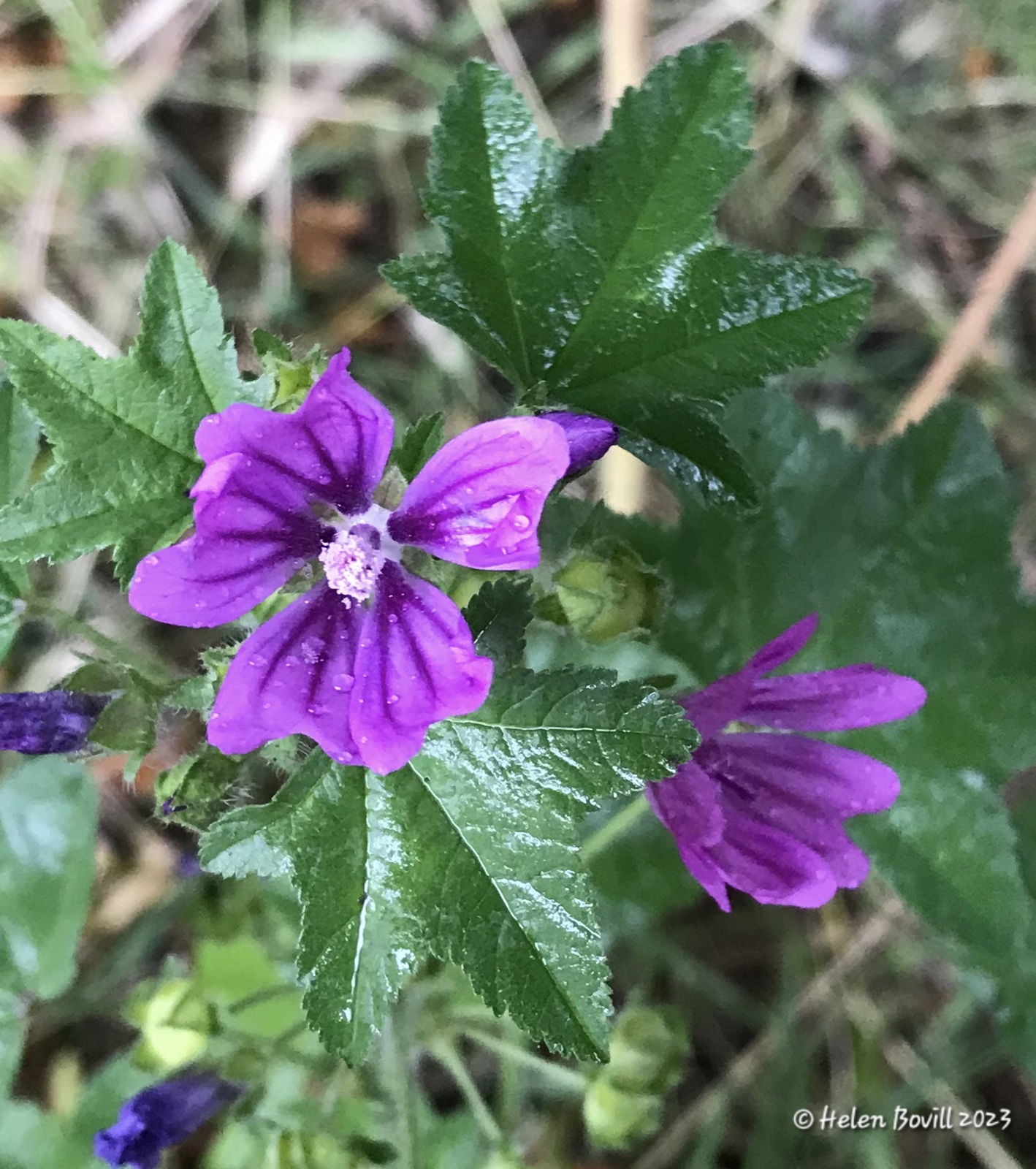
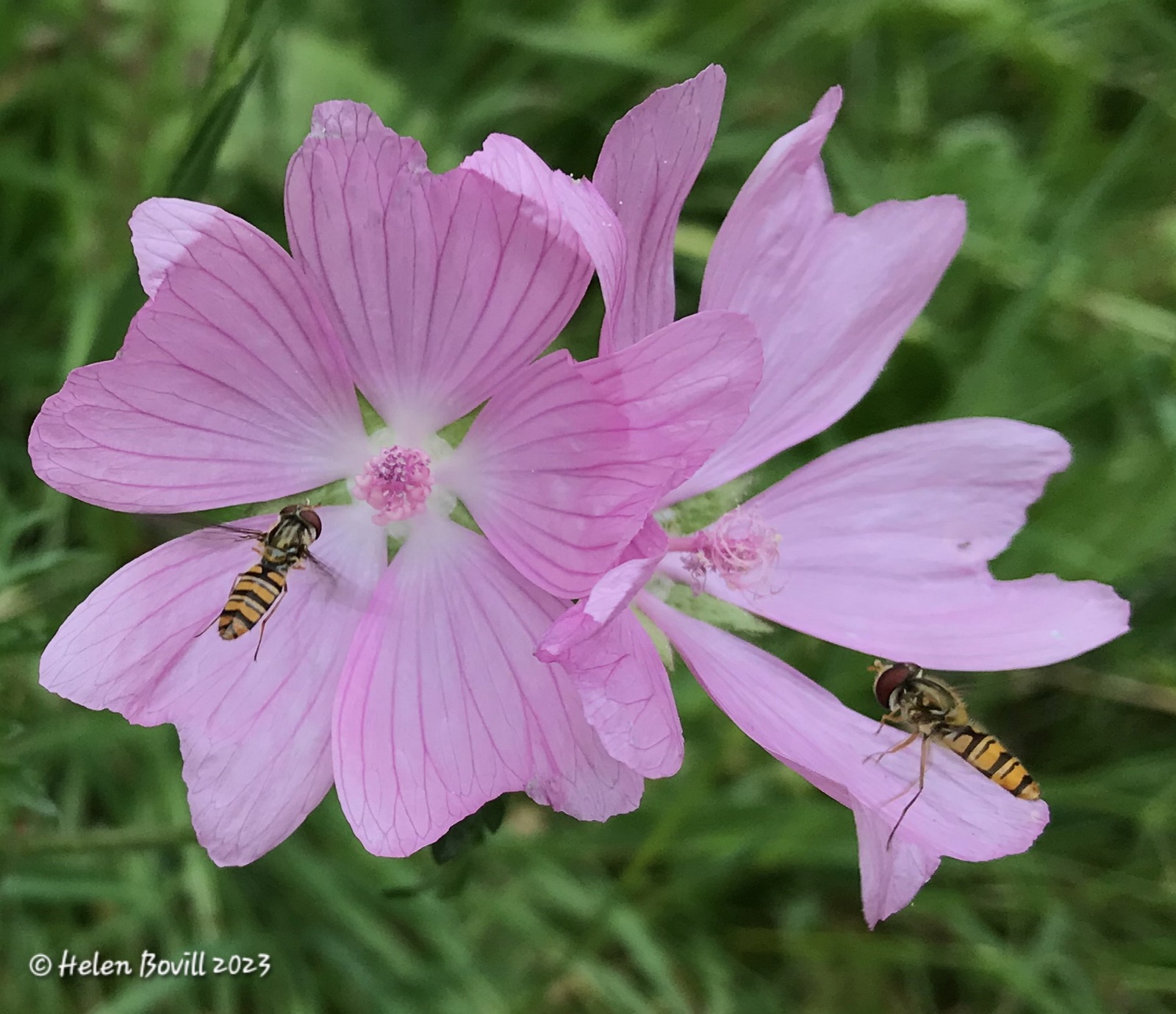
The Wild Basil is also starting to flower.
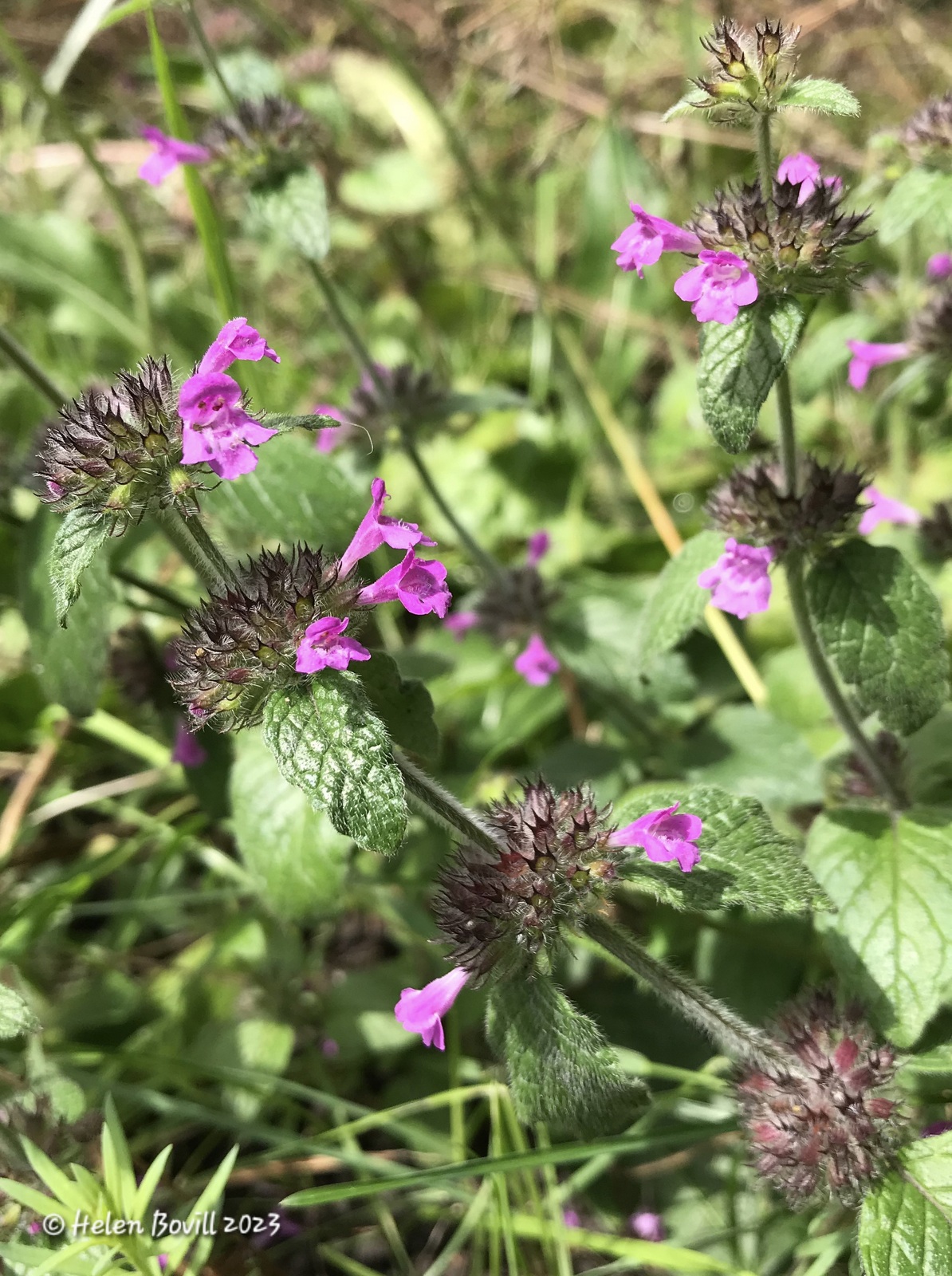
There are Privet bushes in various places in the cemetery, and these were in flower in July. The white flowers are rather small, but they do have a very nice fragrance.

There is also some Hedge Woundwort growing in the cemetery. It appears in the same place each year but doesn’t seem to have spread anywhere else.
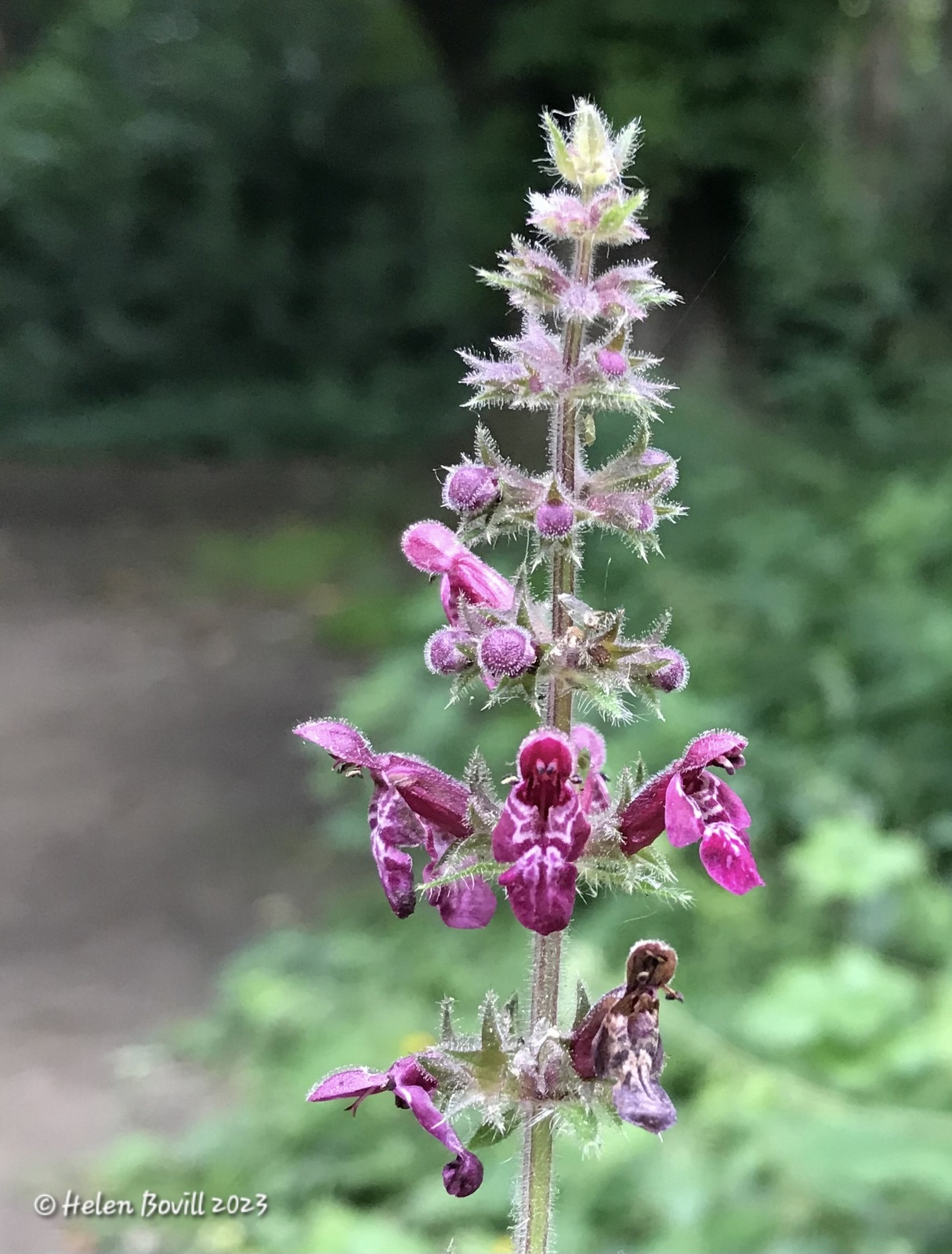
I also found some Wall Lettuce – it seems to tolerate shade and adds a bit of colour to a dark area.
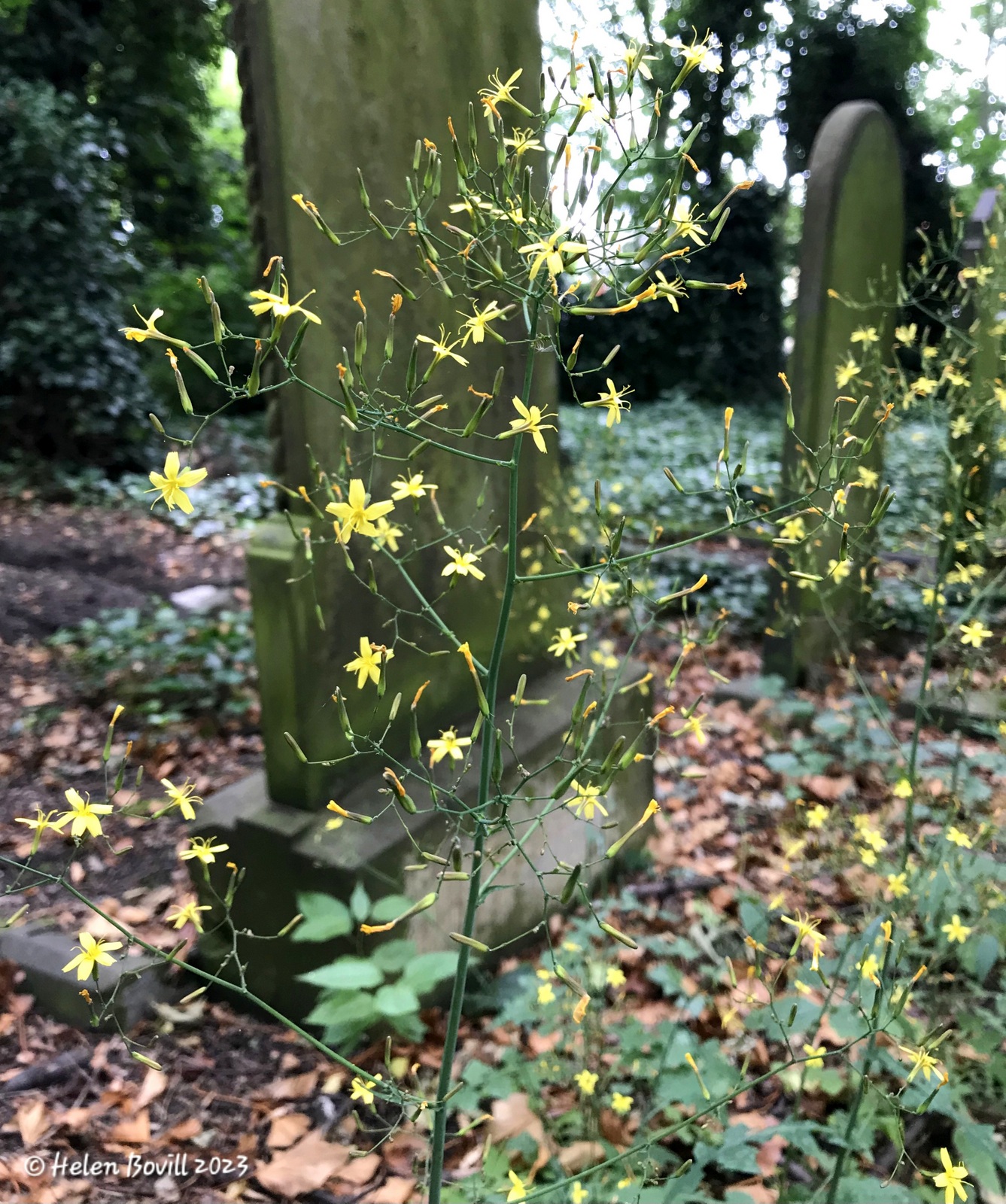
Fungi
Not much to report, except for this small cluster of Fairy Inkcaps underneath an old bracket fungus. There are a few tough old bracket fungi still around, but I haven’t seen any other new mushrooms.
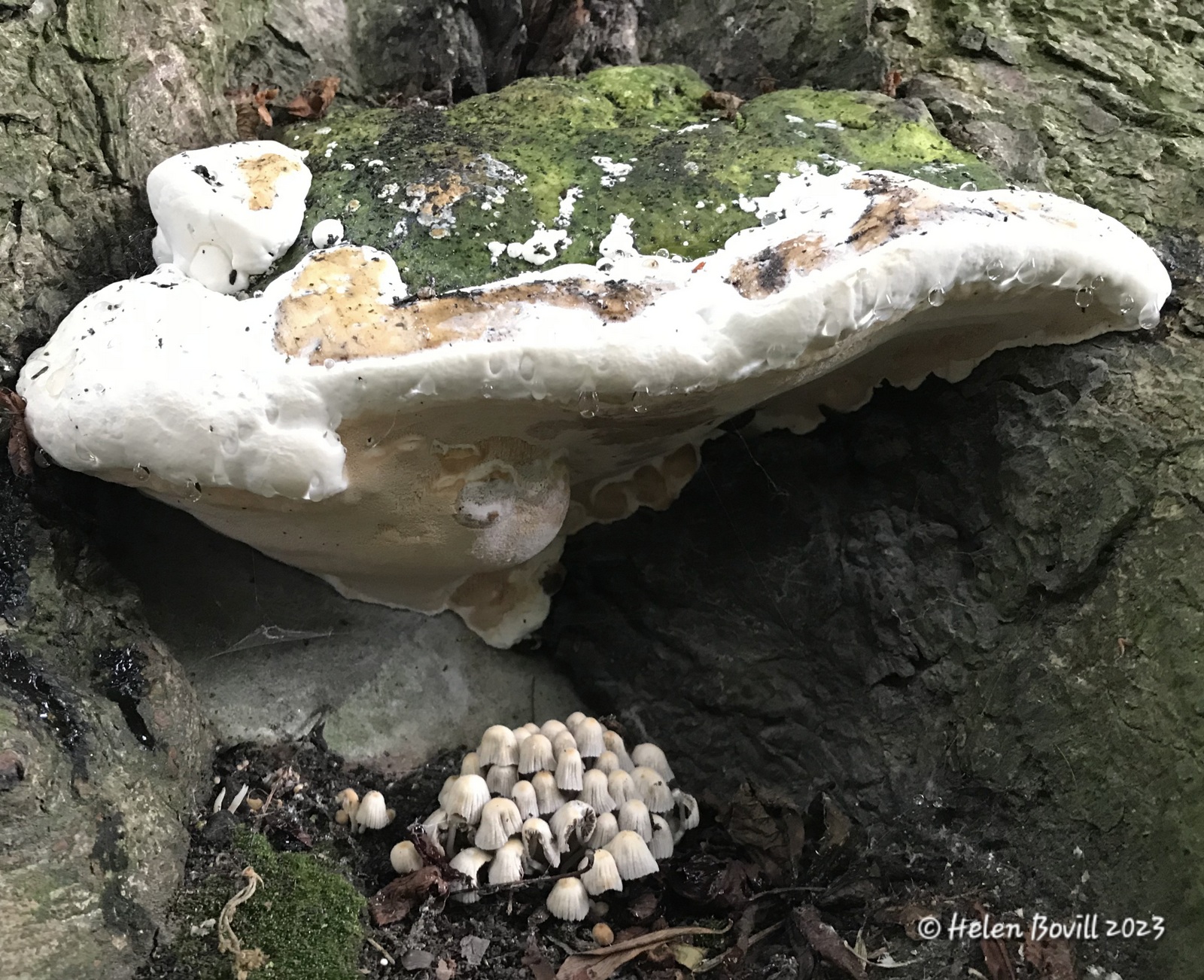
Conclusion
A cooler and wetter month than June. The vast majority of the Hogweed and Cow Parlsey has finished for the season, so anything you see from now on that looks similar is probably Wild Carrot. The die-back has left the cemetery looking a little battered, and the heavy showers have caused the taller plants such as the Thistles to bend over. But fresh plants are starting to grow and flower, and there is abundant cemetery wildlife wherever you look.



